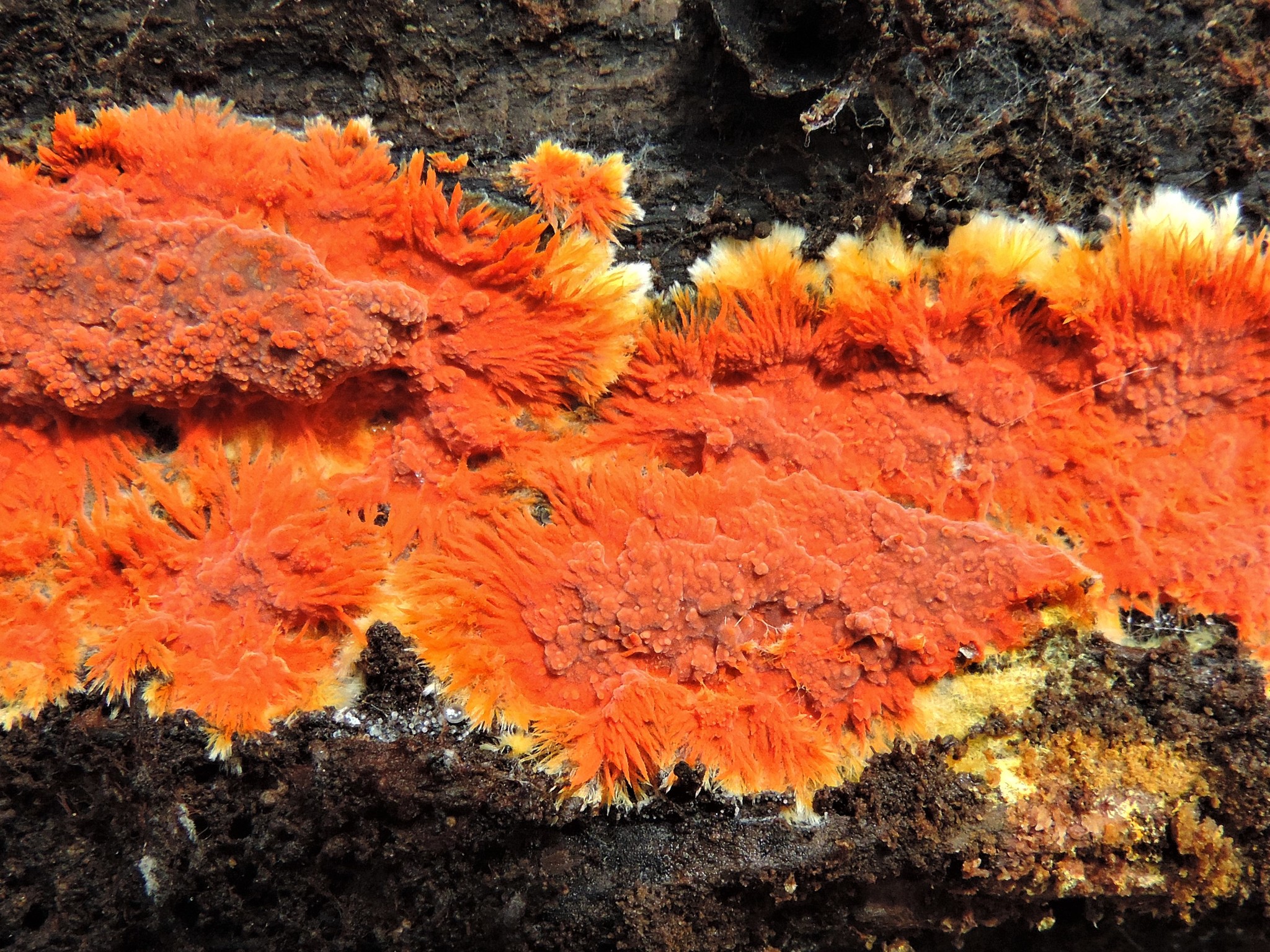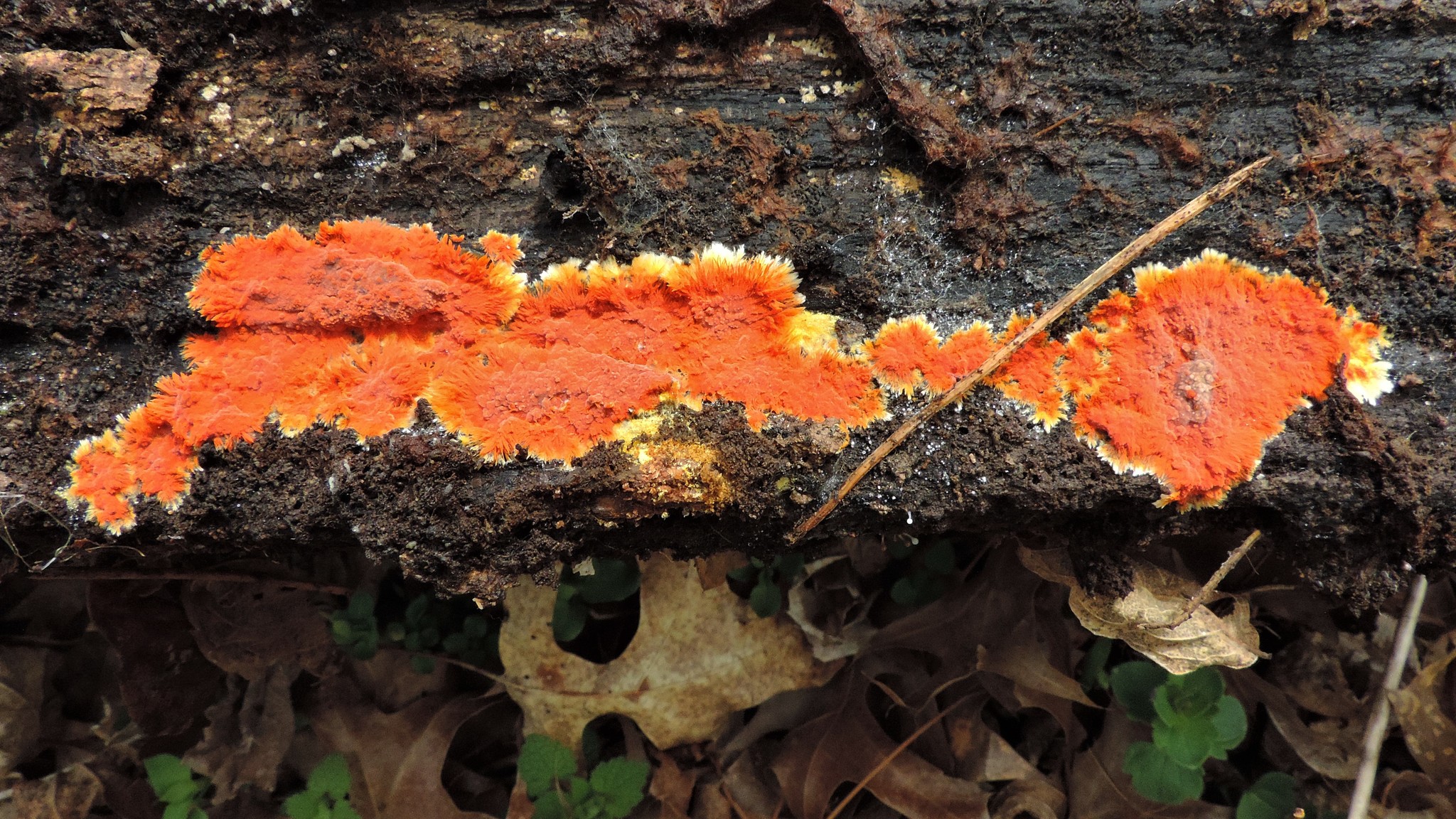Map Snapshot





6 Records
Seasonality Snapshot
Eating mushrooms can be dangerous. One should do so only with expert advice and great care. MBP accepts no liability for injury sustained in consuming fungi or other biodiversity. Use of media featured on Maryland Biodiversity Project is only permitted with express permission of the photographer.
Phlebia coccineofulva in Frederick Co., Maryland (3/21/2020). (c) Emilio Concari, some rights reserved (CC BY-NC).
View Record Details
Media by
Emilio Concari.
Phlebia coccineofulva in Frederick Co., Maryland (3/21/2020). (c) Emilio Concari, some rights reserved (CC BY-NC).
View Record Details
Media by
Emilio Concari.
Source: Wikipedia
| Phlebia coccineofulva | |
|---|---|

| |
| Scientific classification | |
| Domain: | Eukaryota |
| Kingdom: | Fungi |
| Division: | Basidiomycota |
| Class: | Agaricomycetes |
| Order: | Polyporales |
| Family: | Meruliaceae |
| Genus: | Phlebia |
| Species: | P. coccineofulva
|
| Binomial name | |
| Phlebia coccineofulva Schwein. (1832)
| |
| Synonyms[1] | |
| |
Phlebia coccineofulva, commonly known as the scarlet waxcrust, is a species of crust fungus in the family Meruliaceae. It was described as a new species by Lewis David de Schweinitz in 1832.[2] The fungus is found in North America, continental Europe, and northern Asia, where it grows as a saprophyte on decaying stumps and woody forest debris.[3]
References
[edit]- ^ "GSD Species Synonymy: Phlebia coccineofulva Schwein". Species Fungorum. Kew Mycology. Retrieved 2017-08-18.
- ^ Schweinitz, L.D. von (1832). "Synopsis fungorum in America boreali media degentium". Transactions of the American Philosophical Society (in Latin). 4 (2): 165.
- ^ Roberts, Peter; Evans, Shelley (2011). The Book of Fungi. Chicago, Illinois: University of Chicago Press. p. 429. ISBN 978-0-226-72117-0.

